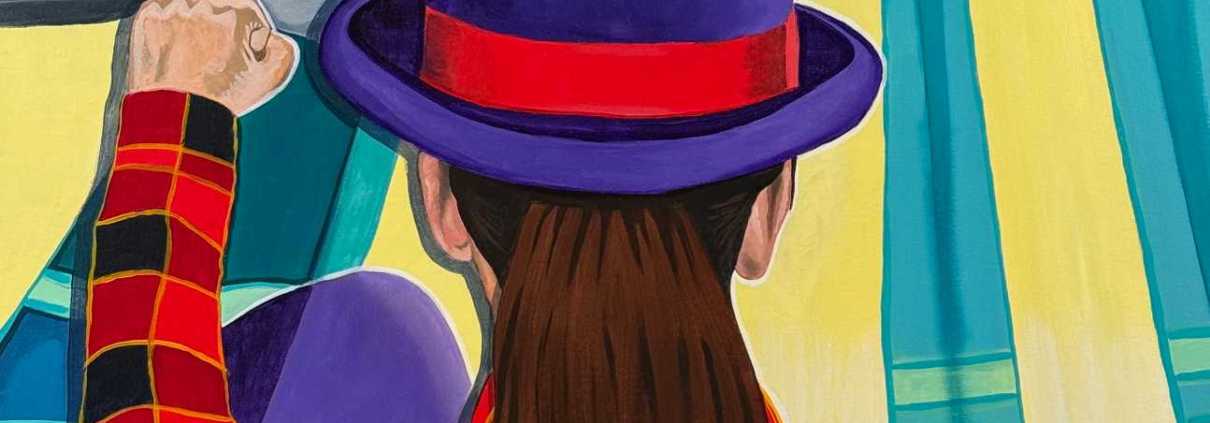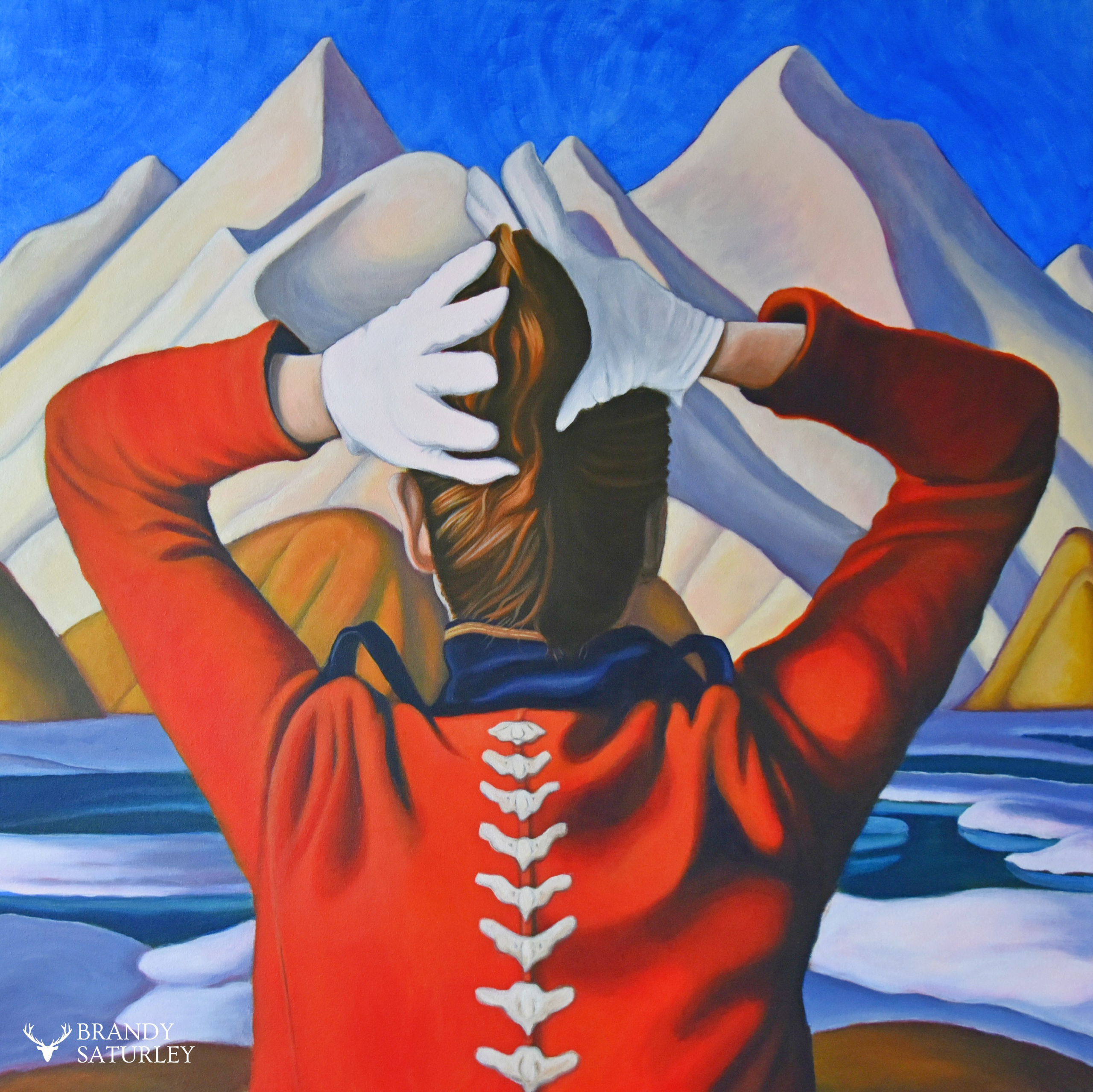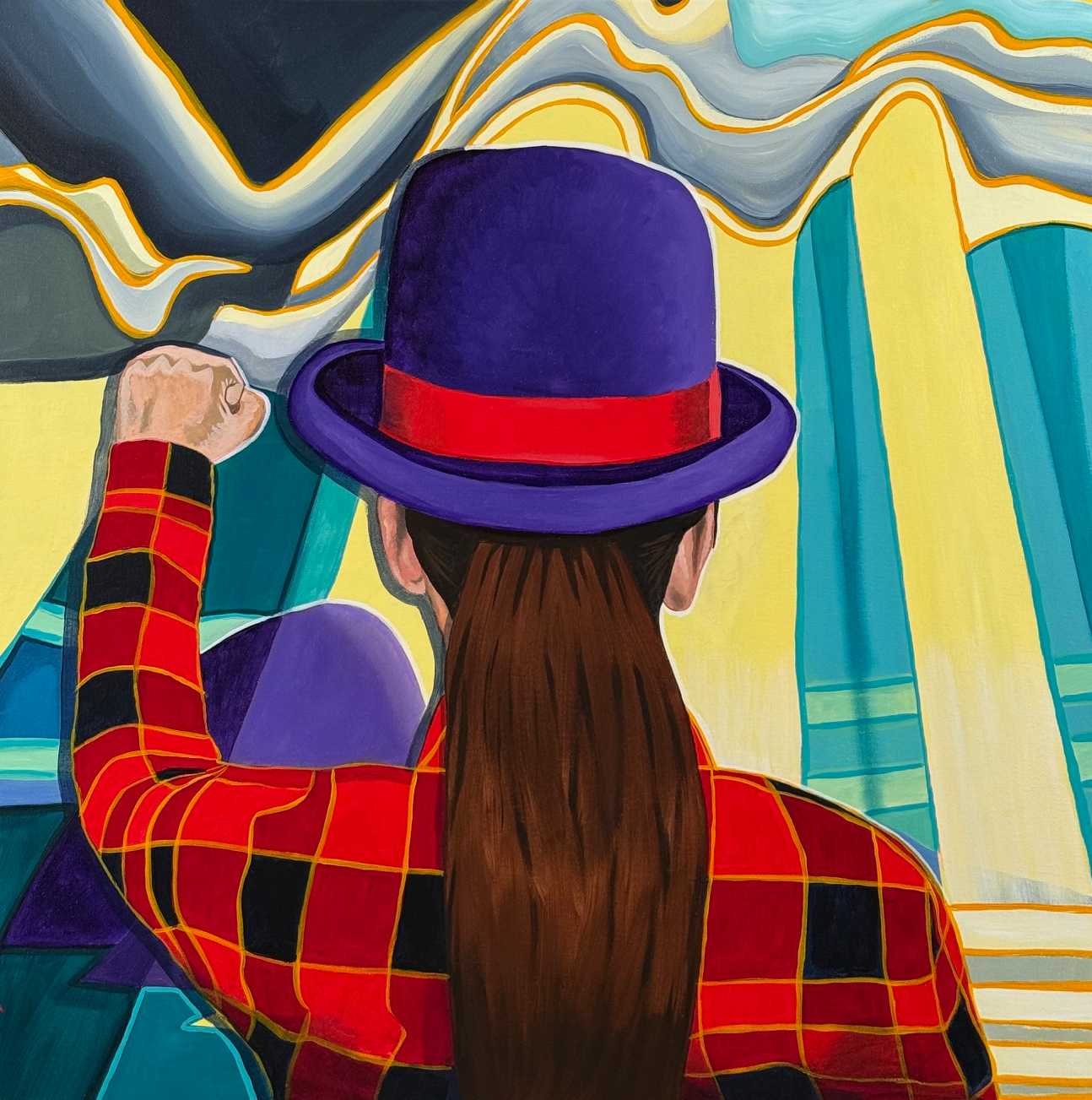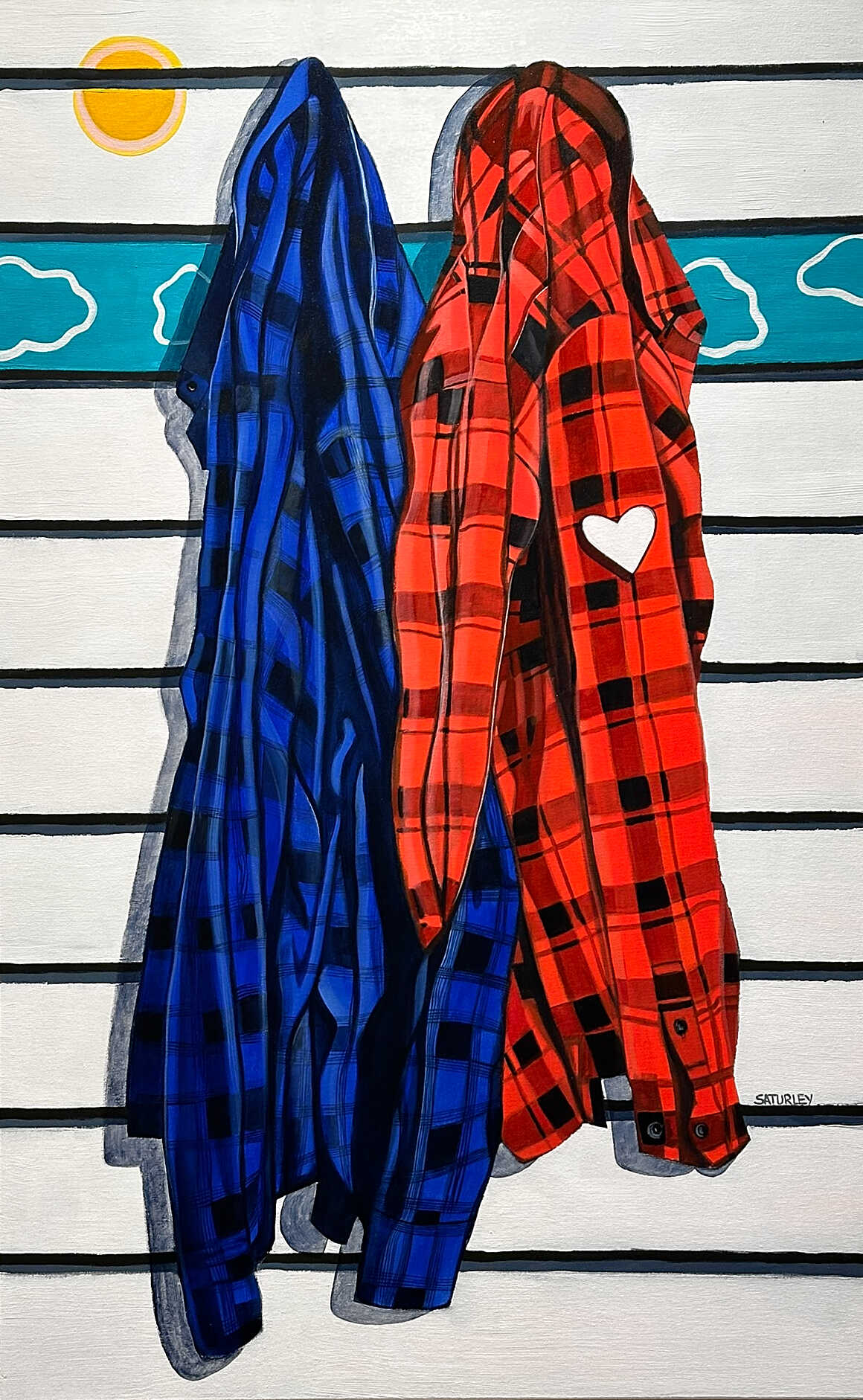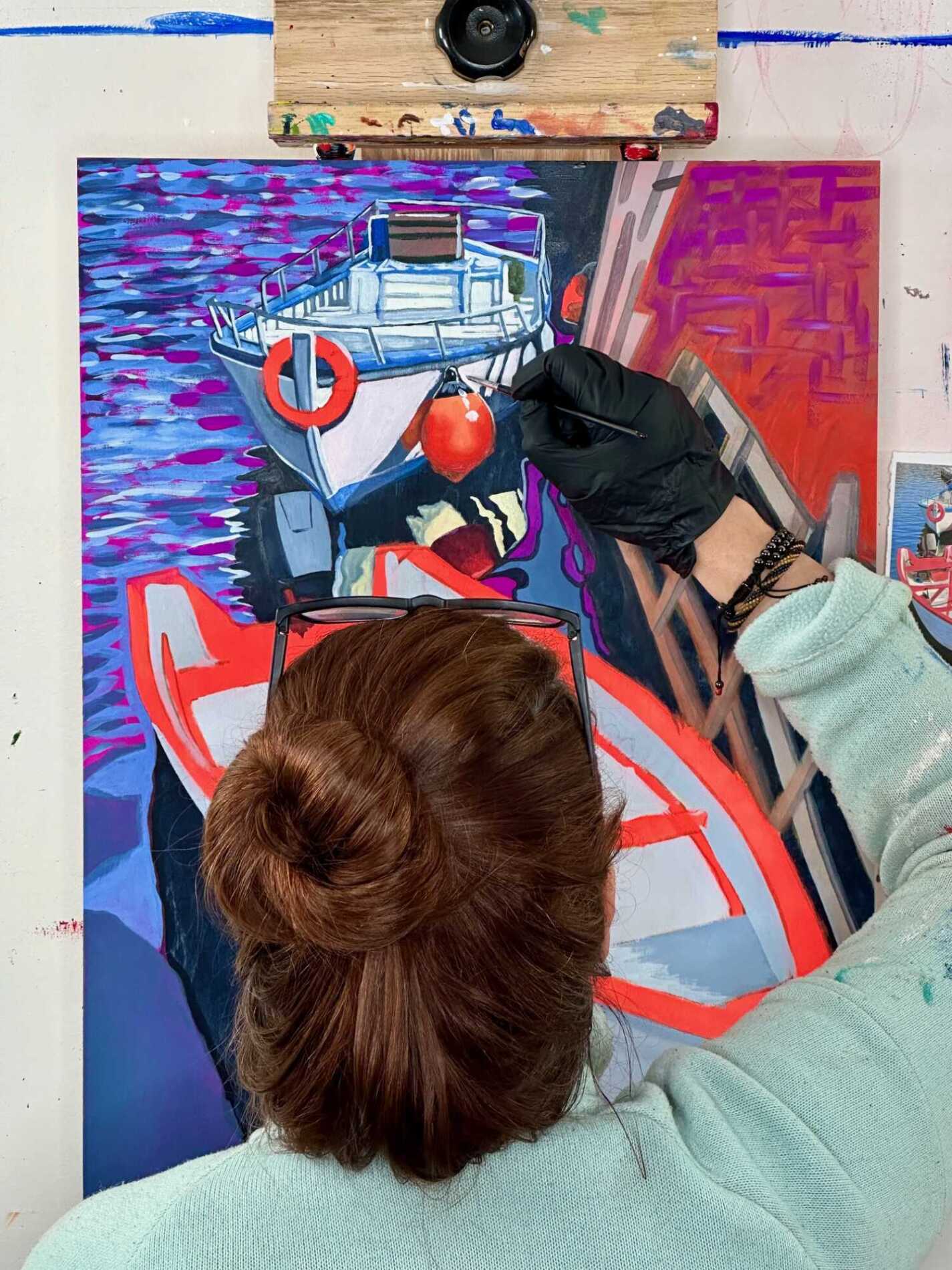Bowler Hat Painting
She Was Knocking On The Sky – A New Painting with a Bowler Hat
My painting process has always been rooted in storytelling. It begins with collecting, taking numerous photo references from my travels across Canada and collaging them together into a single narrative or scene. These photos might come from moments in nature or from the controlled light of my studio. Often, they sit in my archive for years before revealing their purpose. This is the story of a painting with a bowler hat.
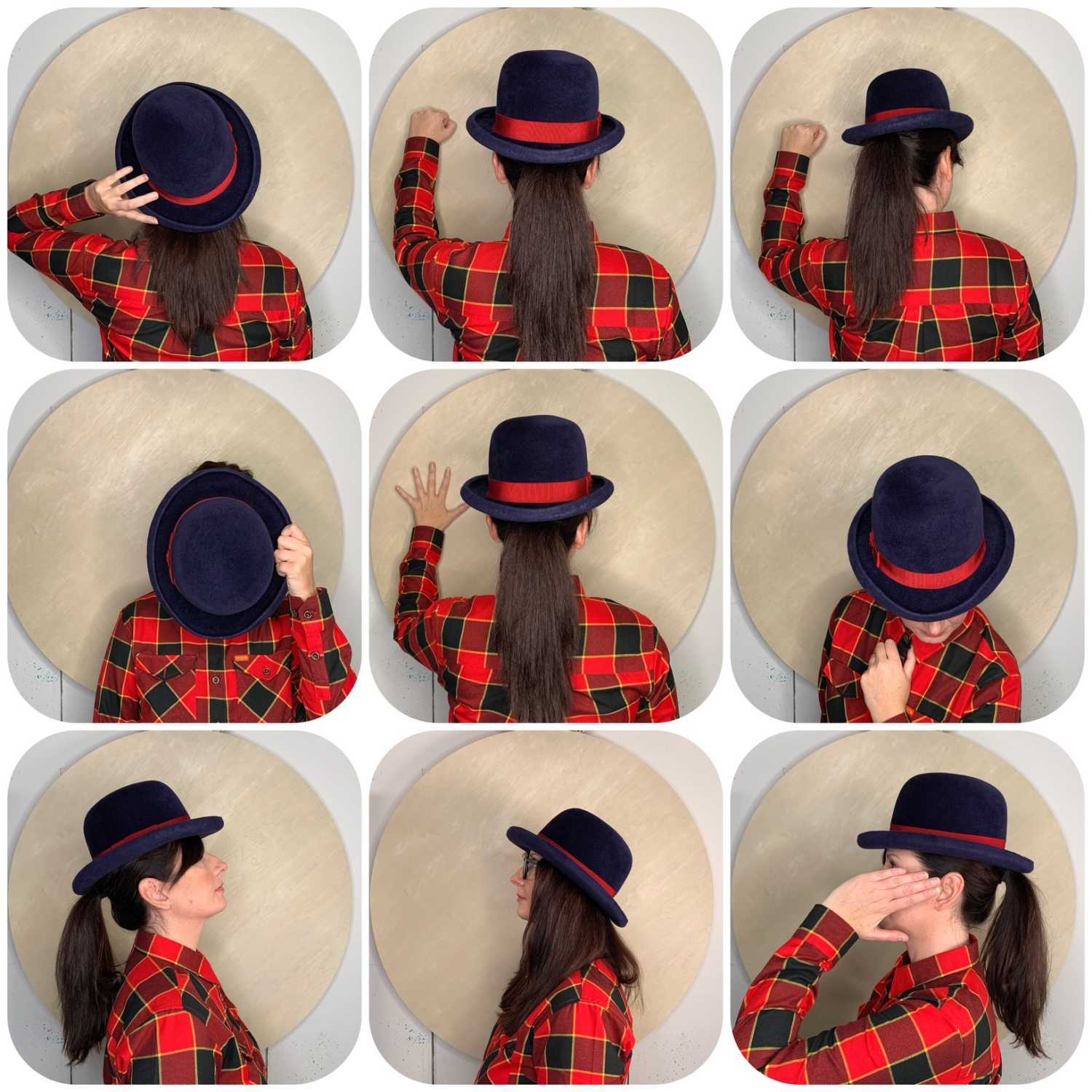
Canadian Artist Brandy Saturley wearing Lilliput Hats Bowler Hat
The latest painting began with two familiar objects: a bowler hat custom-made for me by Karen Ruiz of Lilliput Hats, and a flannel shirt from Dixxon Flannels Canada – a combination that has become part of my #ICONICCANUCK persona. Over the past two decades, this persona has found its way into several of my self-portraits – a recurring figure set against landscapes that echo the abstracted forms of Lawren Harris. These works merge the real and the surreal, blending lived experience with imagined topographies.
In this new painting, I return to those themes – idealized forms, undulating skies, filtered light, and softly rounded island shapes. The figure wears a purple bowler hat and a plaid shirt, her long brown hair moving with the wind. She is a wanderer, never home long, drawn to the road and to the horizon beyond.
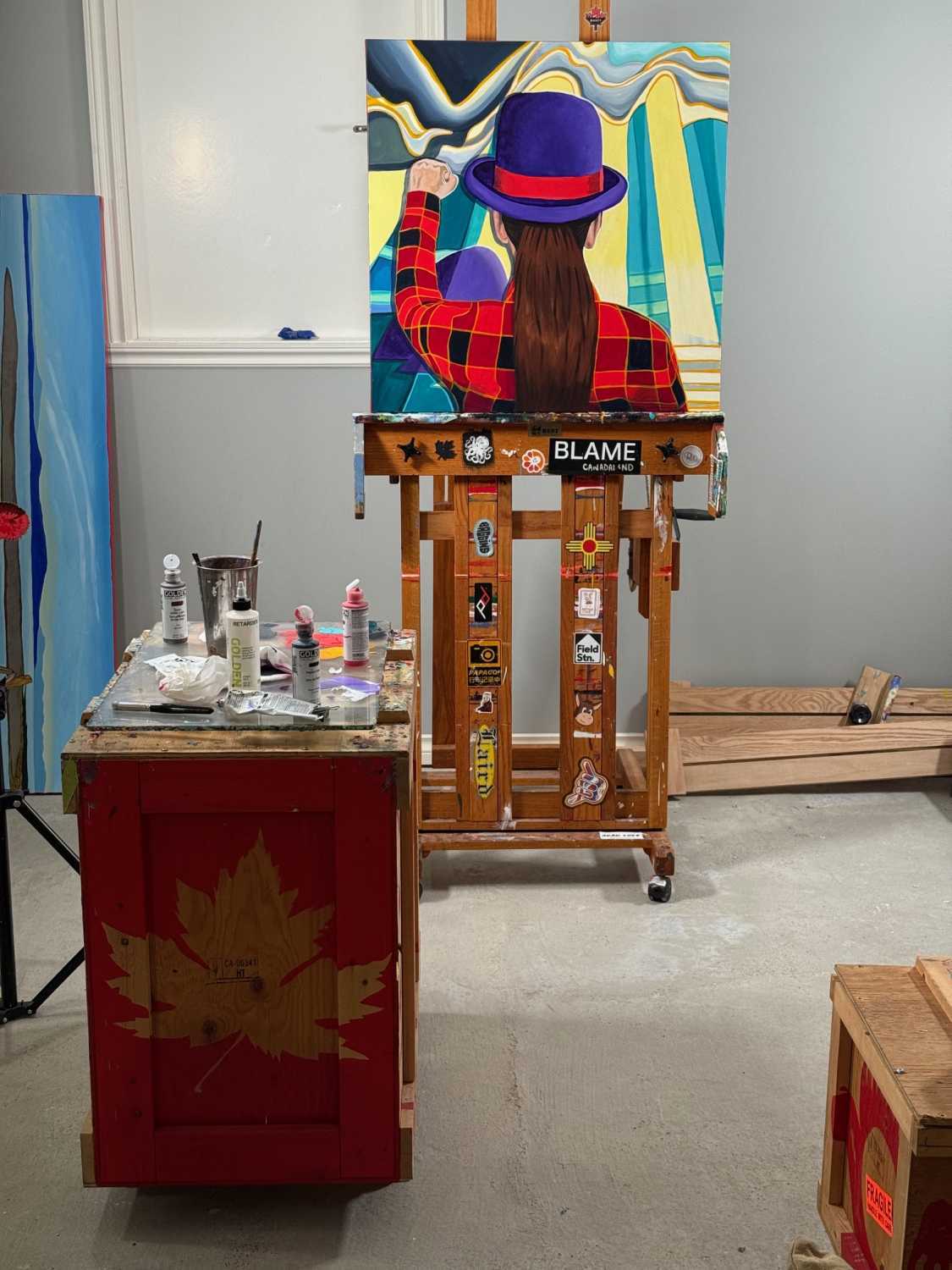
Inside Brandy Saturley Studio
The title and spirit of the piece come from a Buddhist proverb: “Knock on the sky and listen to the sound.” It speaks to the act of seeking- of listening deeply to nature, to intuition, to the world’s quiet messages. In this painting, “knocking on the sky” becomes both a poetic and spiritual gesture, a moment of connection between self and landscape.
The girl with the bowler hat is, in many ways, me, and all who search for meaning in the beauty of the unknown.
The Bowler Hat in Art History
The bowler hat has a rich and layered symbolism in art history, a small object that has come to represent much larger ideas about identity, class, conformity, and individuality.
Originating in 19th-century England as practical headwear for working-class men, the bowler quickly crossed class boundaries. By the mid-20th century, it became synonymous with the British middle class, the uniform of bankers and city workers, a symbol of respectability and social order.
In art, however, the bowler hat took on more surreal and philosophical meanings. Most notably, René Magritte used the bowler repeatedly in his paintings as a stand-in for the “everyman” – a faceless, anonymous figure navigating dreamlike realities (The Son of Man, Golconda, The Man in the Bowler Hat). Magritte’s use of the hat stripped it of social hierarchy and turned it into a symbol of mystery, anonymity, and the tension between appearance and reality.
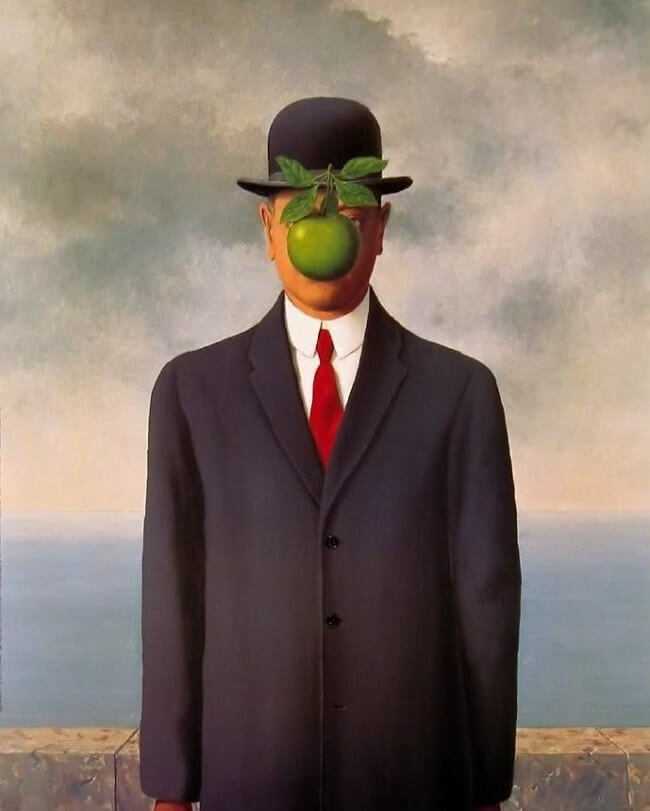
Later artists and filmmakers have drawn on the bowler’s visual and cultural weight to explore ideas of duality, between individuality and conformity, reality and illusion, the seen and unseen self.
In your own work, the purple bowler hat subverts this history. It becomes personal rather than anonymous – a symbol of self-definition instead of conformity. By placing it within a natural, Canadian landscape rather than an urban or surrealist setting, you transform the hat from a marker of class or mystery into a poetic emblem of identity, curiosity, and connection to place. Having the woman wearing a plaid shirt, the uniform of the working class everyman, further echoes the sentiments of Magritte.

